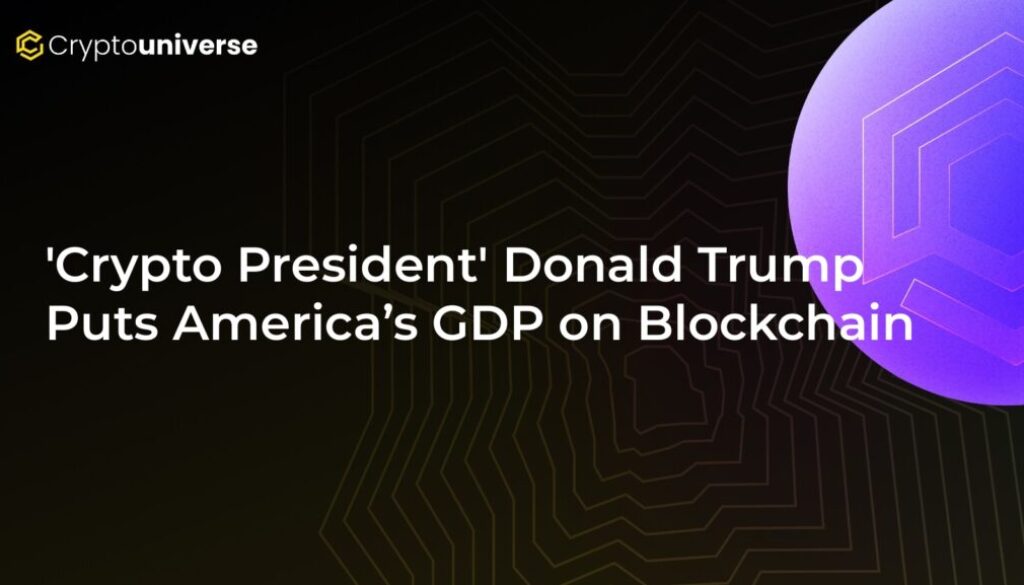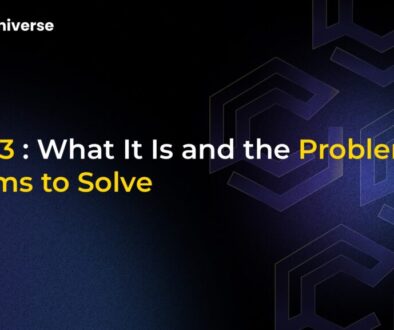‘Crypto President’ Donald Trump Puts America’s GDP on Blockchain

A Monumental Leap: US Economic Data Makes Its On-Chain Debut
In a move that is sending shockwaves through both Washington and the digital asset world, the United States has officially begun publishing its Gross Domestic Product (GDP) data on the blockchain. This groundbreaking initiative, championed by President Donald Trump, marks one of the most significant government adoptions of blockchain technology to date and solidifies his reputation as the ‘Crypto President’.
The U.S. Department of Commerce confirmed the historic move, announcing that the nation’s most critical economic indicator will now be recorded on an immutable, public ledger. This isn’t a test run or a pilot program; it’s a full-scale implementation. The initial rollout spans nine major blockchains, including industry titans like Bitcoin, Ethereum, and Solana, ensuring the data is widely accessible and verifiable by anyone, anywhere in the world.
This decision to put America’s GDP on the blockchain signals a paradigm shift in how governments handle and disseminate critical information, moving from opaque, periodic reports to a new era of radical transparency.
Why Put the World’s Most-Watched Economic Number on a Blockchain?
For decades, the world has waited for government agencies to release economic figures like GDP on a quarterly basis. These releases often cause massive market volatility and are subject to revisions and political spin. The Trump administration’s move to leverage blockchain technology aims to dismantle this outdated system. Here’s why it’s a game-changer:
- Unquestionable Transparency: By placing GDP data on-chain, it becomes tamper-proof. The cryptographic security of blockchains like Bitcoin ensures that once a number is recorded, it cannot be altered or deleted. This creates a single, verifiable source of truth.
- Real-Time Access: The move opens the door to more frequent, potentially real-time, economic updates. Markets will no longer have to wait for a scheduled press conference; they can react instantly to on-chain truth.
- Eliminating the Middleman: This initiative removes reliance on government press releases or media interpretations. Analysts, investors, and the general public can now access the raw data directly from the source, free from political spin or delays.
Trump’s Grand Vision: A Crypto-Powered Economy
This initiative is a cornerstone of the vision laid out in <'Crypto President' Donald Trump Puts America’s GDP on Blockchain>. The President has been vocal about his support for the digital asset industry, viewing it as a key to unleashing American economic power. In recent statements, Trump has even floated audacious ideas about leveraging crypto on a national scale.
“Maybe we’ll wipe out the $35 trillion U.S. debt using crypto,” Trump reportedly mused. “I’ll just write on a small piece of paper: ‘$35T in crypto — no more debt.’ That’s how I like it.”
While such statements are bold, the GDP-on-blockchain project is a concrete step in that direction. Commerce Secretary Howard Lutnick, a key figure in this push, has emphasized that this is just the beginning of integrating blockchain into the fabric of the American economy.
The Ripple Effect: What This Means for the Future
The implications of this move are vast and have ignited fervent discussion across the crypto community. The news has particularly energized supporters of projects focused on real-world asset (RWA) tokenization and large-scale settlement.
Speculation is rampant that this is the first step toward tokenizing other significant national assets. The XRP community, for example, has pointed to this development as validation for its long-held belief that digital assets will eventually be used to settle trillions in value, from the national debt to the global real estate market.
Could we see other government datasets follow suit? Imagine:
- Real-time inflation numbers on-chain.
- National debt tracking updated by the second.
- Federal budget spending recorded transparently for all to see.
This move sets a powerful precedent for other nations to follow, potentially ushering in a new global standard for economic reporting.
A New Era of Trust, But Questions Remain
Putting GDP data on a blockchain is a monumental step toward transparency. However, it also raises a fundamental question: who controls the ‘economic truth’ before it gets coded? While the blockchain ensures the data cannot be tampered with *after* it’s published, the initial input still comes from a centralized government source.
Despite this, the initiative is an undeniable victory for the blockchain industry. It represents the ultimate validation of the technology’s core promise: creating a more transparent, efficient, and trustworthy world. For now, the message is clear: the United States is embracing a crypto-forward future, and the world is watching.


